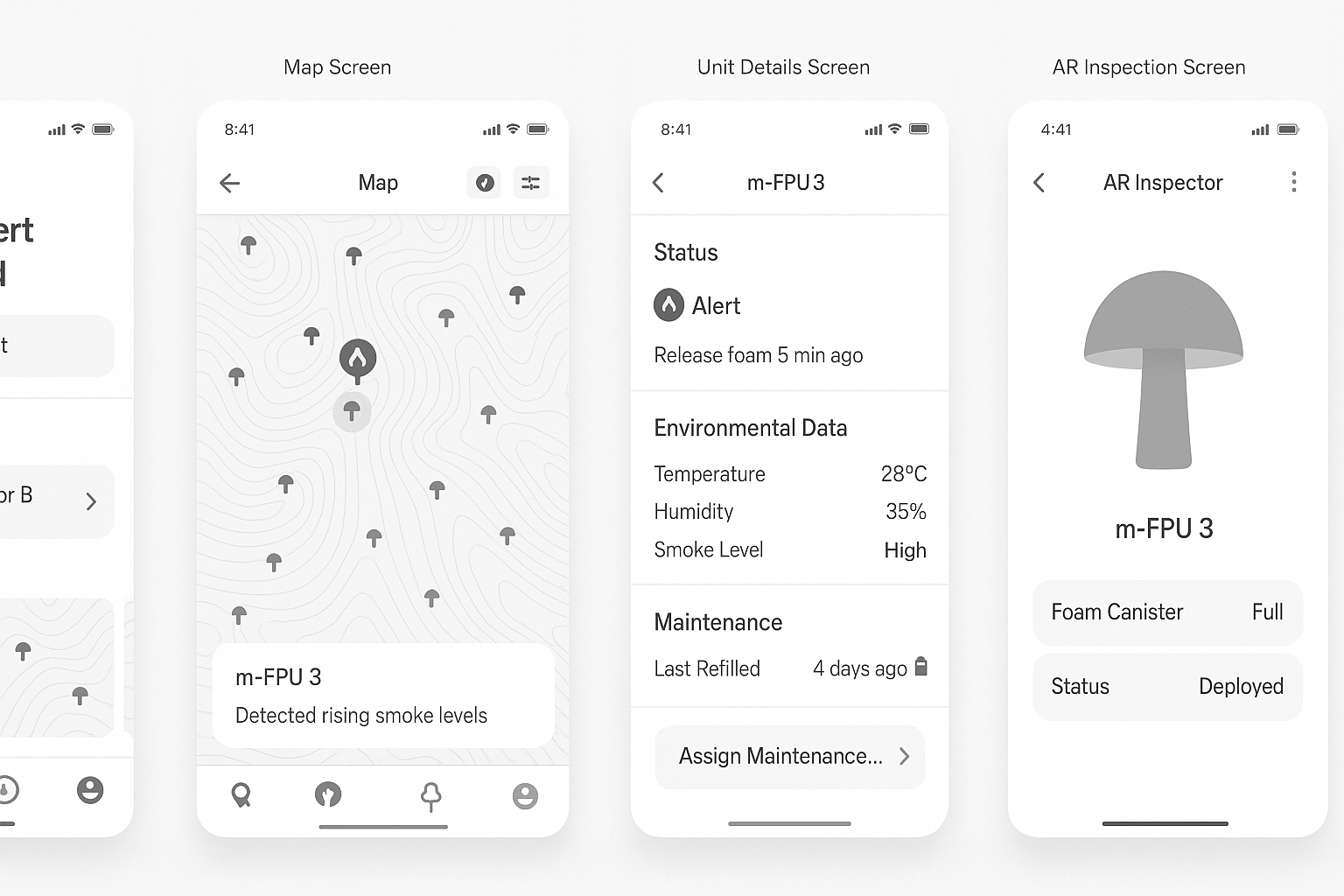Forest guard: nature-inspired mushroom fire defense.
About the project
An innovative concept for an embedded forest mechanism that monitors and protects natural ecosystems automatically.
One of my favourite things to do is ideate and imagine bold solutions to real-world problems.
Recently, I came up with a concept for a device that could be installed in forests and
automatically
activated when a fire is detected nearby. In the coming months, I’ll be
developing this idea as if it were a real product — exploring its design, UX, and potential
impact.
If the idea sparks something in you, feel free to build on it — I’d genuinely love to see it come to life. I just ask that you bring me along for the journey and consider collaborating. Innovation is always better shared.
In the heart of vulnerable forests, a bio-inspired sentinel quietly stands watch — the
Mushroom Guard. This unassuming, mushroom-shaped pole blends naturally into the woodland,
but it's anything but ordinary.
Hidden within its organic silhouette is an advanced fire
detection and suppression system.
Equipped with heat sensors and air quality monitors, the Mushroom Guard activates when it
detects early signs of fire - such as elevated temperatures or smoke — within a 5-meter
radius.
Upon detection, it releases a biodegradable, non-toxic fire-retardant foam designed
to smother flames before they spread.
The foam forms a protective barrier on vegetation,
reducing the chance of ignition and buying critical time for emergency response teams.
Silent, sustainable, and smart - the Mushroom Guard represents a new wave of eco-technology where design meets environmental resilience.

Mushroom-Shaped Fire Prevention Unit (M-FPU)
The M-FPU is a passive, autonomous fire suppression device designed for early-stage wildfire
mitigation in forested environments.
Its structure mimics the form of a large mushroom to
blend with natural surroundings while maximizing surface area for sensor arrays and foam
dispersion.
Key Features
- Thermal and Gas Sensors: Monitors for temperature and smoke, triggering action when fire signs are within 5 meters.
- Suppression System: Releases biodegradable, non-toxic foam to coat vegetation and prevent fire spread.
- Power Source: Self-powered via hybrid solar and kinetic energy systems.
- Communication: Mesh networking enables unit-to-unit and central alert transmission.
- Maintenance and Refilling: Foam canisters are modular and refillable by rangers or drones.
UX Design Approach
1. Define the Users
- Primary: Forest rangers, Environmental scientists, Firefighters, Forestry maintenance workers
- Secondary: Conservation organizations, Government fire control agencies, Drone operators
2. User Goals
- Monitor M-FPU unit status
- Receive real-time alerts
- View unit location and environmental data
- Coordinate fire risk responses
- Manage maintenance and refills
3. Key UX Components
I will be designing these in the following months and gathering your feedback.
- Dashboard (Web + Mobile): Map view, environmental data, alerts, maintenance logs, and network status.
- AR Maintenance Interface: AR overlays with instructions and diagnostics for field use.
- Drone Integration Console: Plan refills or inspections; receive video and diagnostics from drones.
4. UX Principles
- Clarity and calm design for emergency use
- Offline mode support for remote fieldwork
- Accessible UI with language and contrast options
- Design reflecting sustainability and harmony with nature
5. Journey Example scenario 1
Scenario: A forest ranger is alerted to 3 M-FPU units detecting smoke near Ridge Sector B.
- Opens app and views heatmap overlay
- Taps unit ID to check data and history
- Assigns a drone or plans visit
- Uses AR in the field to assess and refill canisters
6. Journey Example scenario 2
Scenario:A family enjoying a picnic begins to smell smoke. Moments later, they spot a growing fire nearby, its flames quickly spreading through the trees.
- Sends an alert to nearby fire authorities and ranger networks.
- Updates the live dashboard with location, intensity, and deployment status.
- Triggers nearby Mushroom Guards via mesh network if the fire continues to spread.